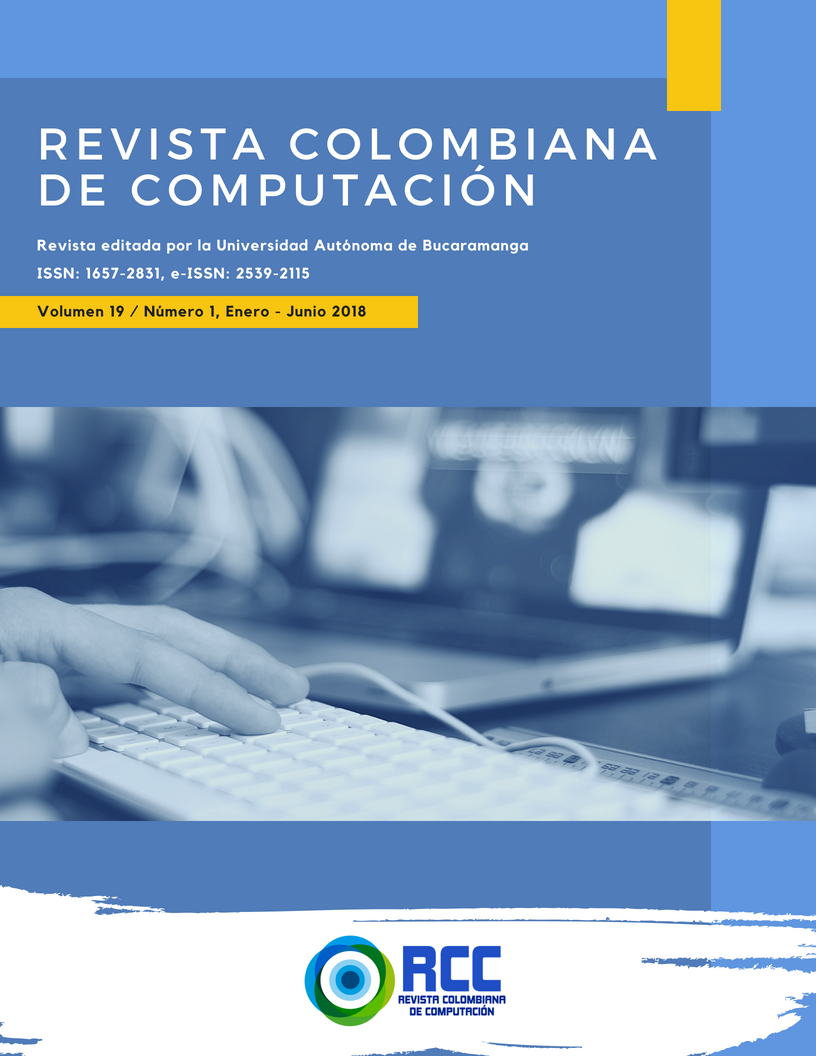Un sistema tangible para el aprendizaje de álgebra relacional
Resumen
Las interfaces tangibles de usuario (TUIs) son aquellas en donde el usuario interactúa con un sistema digital a través de la manipulación directa de objetos físicos (tokens), ligados directamente a cierta funcionalidad/datos dentro del sistema, por lo que su manipulación afecta el comportamiento del sistema. Este artículo presenta TanQuery, un sistema tangible para ayudar en el proceso de aprendizaje de Algebra Relacional. TanQuery incorpora componentes de detección y seguimiento de tokens, para analizar y ejecutar árboles de consulta. El sistema fue probado por estudiantes universitarios y, como se puede observar por los resultados obtenidos, ellos encontraron útil y agradable este tipo de interfaz.
Referencias bibliográficas
[2] M. Green and R. Jacob, “Software architectures and metaphors for non-WIMP user interfaces,” ACM SIGGRAPH Comput. Graph., vol. 25, no. 3, pp. 229–235, 1991.
[3] O. Shaer, “Tangible User Interfaces: Past, Present, and Future Directions,” Found. Trends® Human–Computer Interact., vol. 3, no. 1–2, pp. 1–137, 2009.
[4] P. Marshall, “Do tangible interfaces enhance learning?,” Proc. 1st Int. Conf. Tangible Embed. Interact. - TEI ’07, p. 163, 2007.
[5] A. Jofre, S. Szigeti, S. T. Keller, D. Czarnowski, F. Tomé, and S. Diamond, “A Tangible User Interface for Interactive Data Visualization,” 2015.
[6] B. Ullmer, H. Ishii, and R. J. K. Jacob, “Tangible Query Interfaces: Physically Constrained Tokens for Manipulating Database Queries,” Science (80-. )., vol. 3, no. c, pp. 279–286, 2003.
[7] R. Langner, “CubeQuery: Tangible Interface for Creating and Manipulating Database Queries,” pp. 423–426, 2014.
[8] D. C. Costa, “El modelo relacional y el álgebra relacional,” Barcelona, Eureca Media SL, p. 58, 2005.
[9] S. W. Dietrich, E. Eckert, and K. Piscator, “WinRDBI: A Windows-based Relational Database Educational Tool,” SIGCSE Bull., vol. 29, no. 1, pp. 126–130, 1997.
[10] A. P. Appel, E. Q. Silva, C. Traina Jr, and A. J. M. Traina, “iDFQL-A query-based tool to help the teaching process of the relational algebra,” in World Congress on Engineering and Technology Education. WCETE, 2004.
[11] P. Mitra and F. Sadri, “Relational algebra learning tool,” Imp. Coll. London, 2009.
[12] Y. N. Silva and J. Chon, “DBSnap: Learning Database Queries by Snapping Blocks,” in Proceedings of the 46th ACM Technical Symposium on Computer Science Education, 2015, pp. 179–184.
[13] O. Karpova, N. D. Souza, D. Horton, and A. Petersen, “RAPT : Relational Algebra Parsing Tools,” p. 2015, 2015.
[14] O. Shaer, N. Leland, E. Calvillo-Gamez, and R. K. Jacob, “The TAC paradigm: specifying tangible user interfaces,” Pers. Ubiquitous Comput., vol. 8, no. 5, pp. 359–369, Jul. 2004.
[15] P. Omar and S. Vásquez, “Infraestructura para el Desarrollo de Interfaces de Usuario Tangibles en Escritorios Inteligentes ,” 2017.
[16] M. Kaltenbrunner and R. Bencina, “reacTIVision: a computer-vision framework for table-based tangible interaction,” Proc. 1st Int. Conf. Tangible Embed. Interact., pp. 69–74, 2007.
[17] M. Kaltenbrunner, T. Bovermann, R. Bencina, and E. Costanza, “TUIO: A protocol for table-top tangible user interfaces,” Neuroinformatics, no. May 2005, pp. 1–5, 2005.
[18] B. Shneiderman, “The Dynamic HomeFinder : Evaluating Dynamic Queries in a Real-Estate Information Exploration,” 1992.













